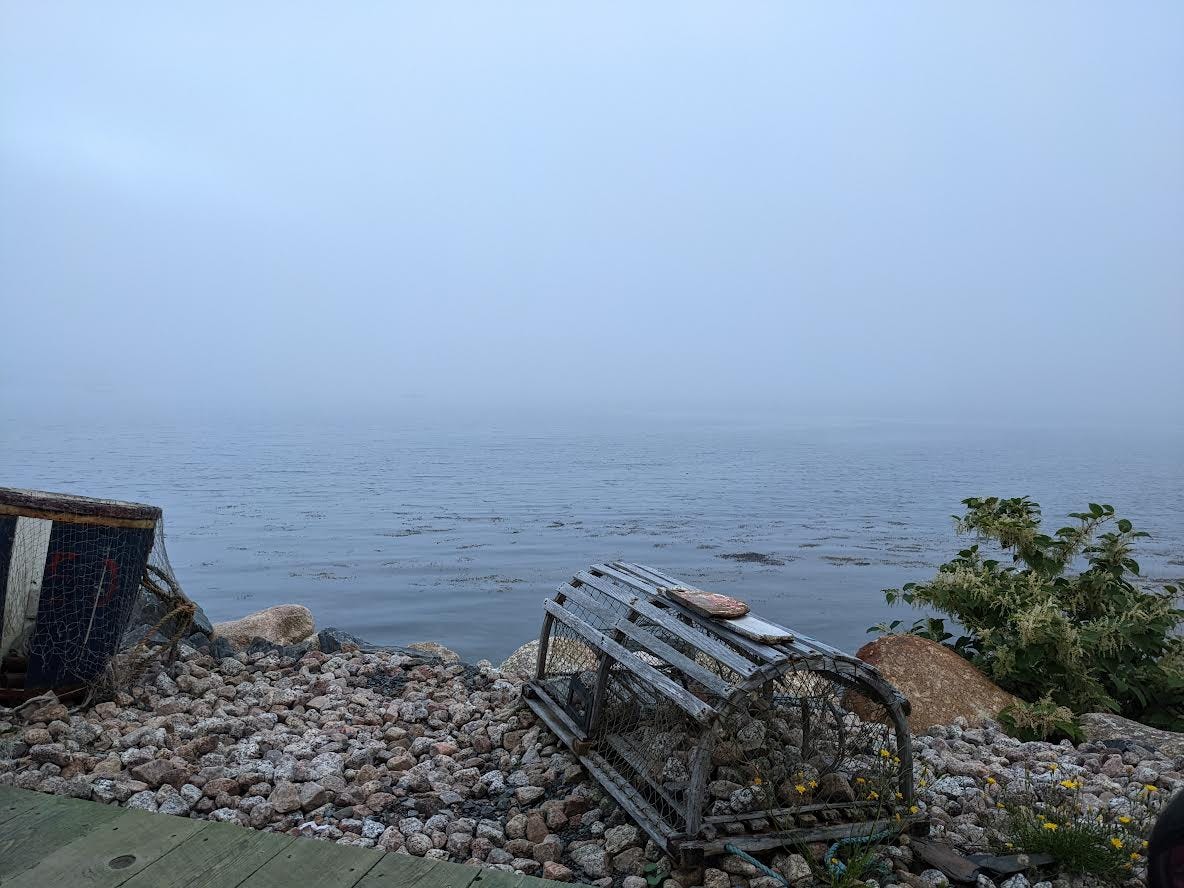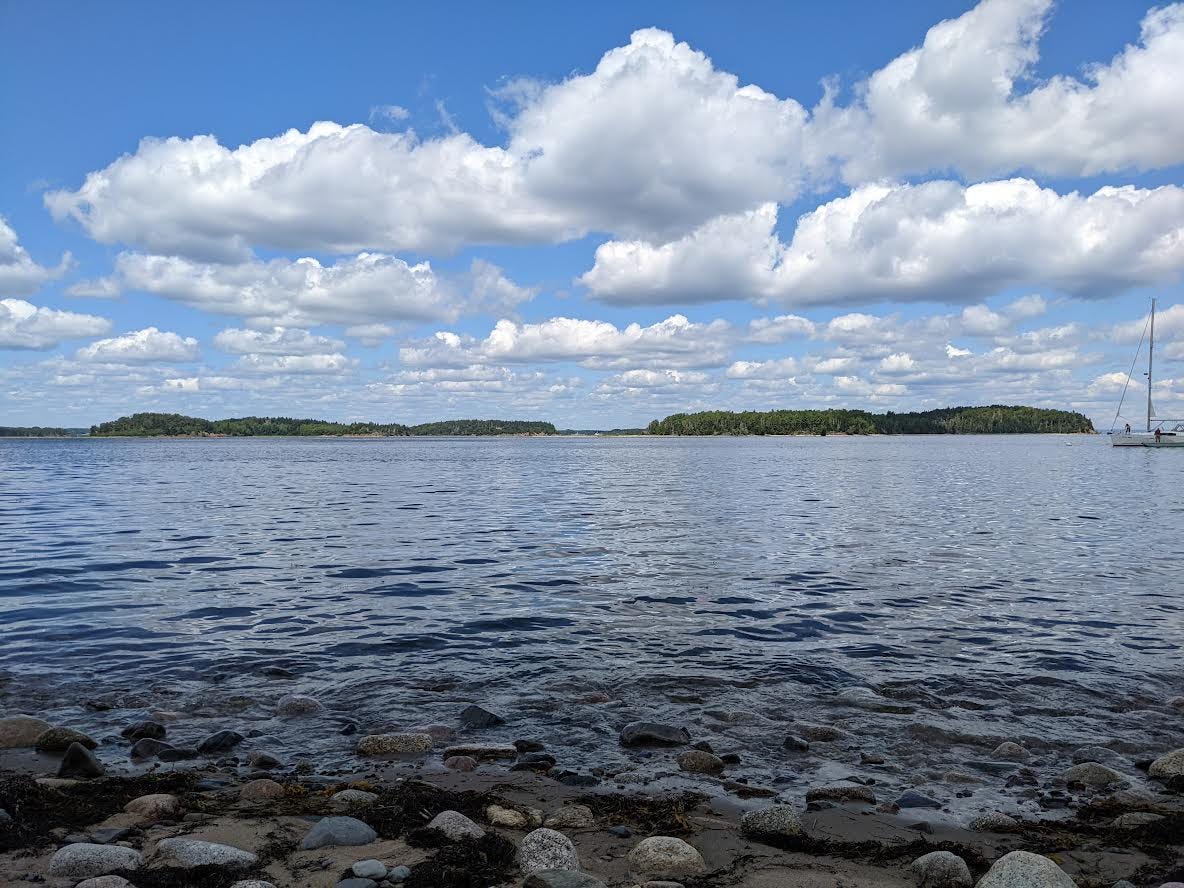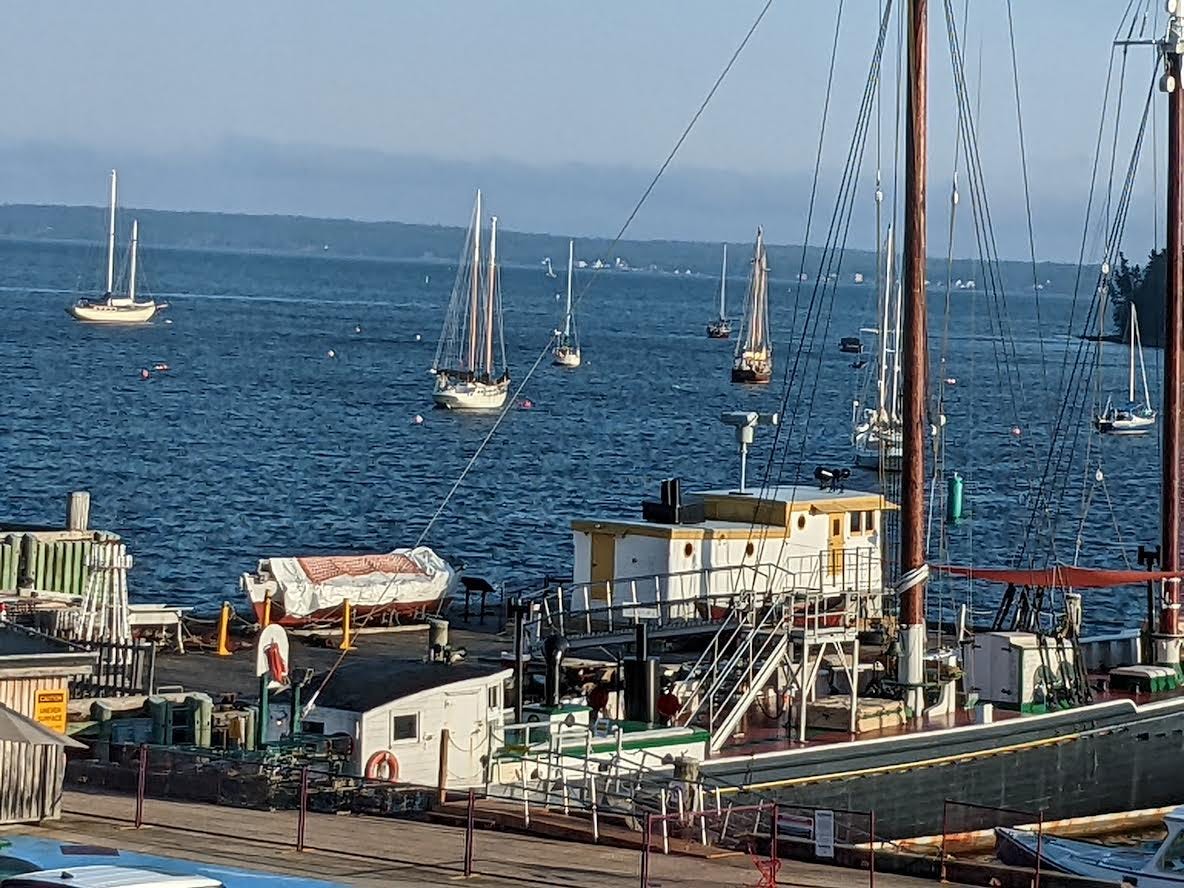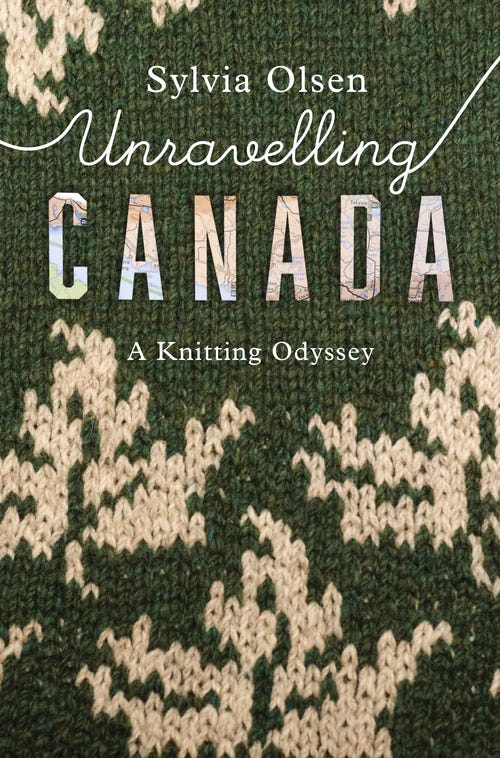Nova Scotia coastal protection continues to lag; Off-grid and Hurricane Lee; Shipwright's pizza; and more
The plot thickens.
Provincial environment minister Tim Halman continues to drag on enacting a coastal protection act for Nova Scotia. It’s a mystery as to why.
The CBC said it requested all feedback the Environment Department received on the issue from the day Halman was sworn in as minister in August 2021 to June 16, 2023. According to the station, the request produced 178 responses, of which the majority supported the act.
However, the broadcaster doesn’t back up the latter assertion. CBC fails to provide a breakdown as to how many people supported the introduction of the act versus those who did not.
At any rate, Halman has indicated the provincial government is not ready to introduce the act even though it already passed previous public consultation in 2019. Back then, Environmental Science and Engineering Magazine noted. “At that time, a new coastal protection zone will extend around the coast of Nova Scotia and new requirements will apply to constructing houses and other structures in the zone.”
The publication noted the proposed act drew some 250 comments, with many split, arguing that restrictions on development are too restrictive while others didn’t believe it was restrictive enough.
That appears to be the findings CBC pulled out from its request for information as well.
Halman told the broadcaster "That feedback has been very critical in us determining it's absolutely important that we have a targeted consultation with property owners. And if you look at previous consultations, that didn't happen."
Despite the fact that previous consultations appeared thorough, Halman and the government have made it clear, the act will not come into force without more consultations taking place.
According to CBC, Halman said his department has hired Group ATN Consulting Inc. to do the next round of consultations, which he expected to begin this fall, despite the fact that all parties supported passing the act in 2019.
Do you believe that act received enough consultation? Do we need more before it is passed and becomes legislation? What are your thoughts on this?
Off-grid in the face of Hurricane Lee
The third week of August and just like that the seasons shift. As quickly as they came, the hummingbirds have left, beginning their southward journey. The feeders come down.
For the first time in months I hear the morose croak of a raven.
Even as I write this some four weeks later, Lee is coming to visit. Hurricane Lee, that is; Lee about two hours out from land fall at this point, a slowly churning mass of rain and wind. The gusts keep intensifying, whipping the trees back and forth as they bend before the storm’s power.
Already, some 50,000 people along the South Shore are without power. Not us. On days like this, we’re happy we’re off-grid (truth be told, on most days we’re happy we’re off-grid). I’m sitting here with the lights on, working before the computer while Steph is over sewing at the electric machine.
Mind you, like everyone else, we’re waiting for the full force of Lee to arrive.
Outside the familiar sound of a hurricane is building: that of a large train barrelling through.
Postscript: So here we are three days post-Hurricane Lee, and for some people the lights are just starting to come back on. I won’t go into a Nova Scotia Power rant as regular readers of this newsletter know my opinion on that subject. Suffice to say, it’s an absolute failure to inform citizens that you’re “standing by” in the event of power outages rather than preventing them in the first place.
The latter assertion will offer small comfort to those just getting their power back now. We’re only in the beginnings of hurricane season with much to weather yet. As for us, aside from some rotten limbs down off trees here and there on the property, we barely registered the hurricane except for the gusty winds when Lee blew through.
Local love: Dining out at Shipwright
Photo courtesy of Shipwright Brewing Company
Lunenburg’s first craft brewery sits atop the Grand Banker Restaurant. Both are owned by Adam Bower, who apparently is a native Lunenburger, and wanted to pay tribute to the UNESCO World Heritage Site’s shipbuilding heritage with the space.
I’m not sure about the shipbuilding connection, but you’d be hard-pressed to find a better pizza in town. A couple of times now we’ve ordered the New York-style (think thin crust) truffled mushroom pizza. It comes drenched in garlic butter and truffle oil with mozzarella, parmesan, and crimini and oyster mushrooms, and chili flakes.
Did I say drenched? This pie is swimming in oil, made all the better by the second-storey view out over the harbour, and the extensive number of beer and cider taps available to help slake your thirst.
Come for the pizza, stay for the view.
Both times we’ve gone home with leftovers, which are equally delicious the next day.
Beyond offering both New York and Chicago (thicker crust) pizzas, the menu has a number of other intriguing options that I really must make room for one of these days. They include the filled, steamed Korean buns known as baos. Those offerings encompass, among other things, Korean chicken, pork belly, lobster, and - how Nova Scotian is this? - donair. A fried chicken sandwich also puts in an appearance on the menu.
Well, if stuffing my face with a truffle pizza is all about celebrating the province’s shipbuilding heritage, I’m all for it!
Oktoberfest is coming to the South Shore, specifically to the Old Black Forest restaurant. In addition to its regular menu, the Old Black Forest has put together an Oktoberfest menu. I’m pretty certain I’ll have to avail myself of that menu at least once.
I can already picture myself at the restaurant, sitting out in the crisp air, the golden and red leaves fluttering down around me as I lift my fork to my mouth, the first juicy, perfectly cooked piece of sausage impaled upon the end of the utensil. Ah, bliss….
Here’s that Oktoberfest menu, which runs from September 28 to October 1.
What I’m reading
Unravelling Canada
Sylvia Olsen’s Unravelling Canada began as an idea for a road trip. Olsen wrote the book, published by Douglas & McIntyre (2021), to promote her 2015 book of essays and knitting patterns, Knitting Stories. A British Columbia-based author and knitting historian, Olsen decided to set out on a cross-country trip from B.C. to Newfoundland to try and understand what tied Canada together, which is why I found the title, Unravelling Canada, counter-intuitive.
As is often the case, Olsen’s journey to understand her country was also one in which to better gain insight into her own life. “Knitting questions lie at the juncture of my English/Scottish/European heritage and my Coast Salish life experiences,” she wrote.
At the same time she wanted to know “was there anything about Canadian knitting that was particularly Canadian? I wanted to know what Canadians were saying about knitting and what knitters were were saying about Canada.”
Furthermore, “maybe by exploring knitting in my own country I’d find out something about my Canadian identity.”
Of course, Canadian road trips are one of the great themes of non-fiction in this country. The Franklin expedition? Road trip! Author, journalist, musician and amateur hockey player Dave Bidini hitting the road to Yellowknife to work in a local paper and write about the experience? Road trip!
Voyageurs setting out to explore the country? Road trip! Author Adam Shoalt’s solo padding across Canada’s Arctic 150 years later to recreate and commemorate those journeys? You guessed it. Road trip!
Therefore, Olsen’s cross-country swing through 40 yarn shops and studios across Canada perfectly fits the bill.
Sylvia Olsen. Courtesy Sylvia Olsen
As Olsen and her husband Tex (he’s from Ontario) drove across the country from one knitting studio to the next in search of the influence of Coast Salish knitting on Canadian needle-craft, she wrote: “If I had to recommend the best place in the country for a mini-knitting tour, I’d choose southwestern Nova Scotia.”
Apparently, we’re crafty.
Everywhere she goes in Nova Scotia, she finds a yarn shop, especially in the southwestern part of the province. Some things change, though. Last time I checked, Have a Yarn, a lovely little shop in Mahone Bay, was up for sale, the current owner care-worn from having looked after the little shop on the tiny town’s main street for many years.
Olsen finds a group of knitters jammed together in an art studio in Shelburne, and cautions readers not to miss the Yarmouth Wool Shoppe, or Becky’s Knit and Yarn Shop in Lockeport, which, she notes, also is host to the annual Lockie the Lobster Knitting Festival in October.
The Wile Carding Mill Museum in Bridgewater also rated a mention. Closed in 1968, the Wile Museum is one of only a handful of 19th-century carding museums left standing. At one point the province had 77 water-powered carding mills. The mill’s machines could card a week’s worth of wool in a single hour, readying the wool for spinning.
So what did Olsen ultimately find? A Canada in the process of growing up and creating new stories for itself. Those not only “illuminate the destructive colonial past, but also present a different and more sustainable, Indigenous way to think about land and resources, and that celebrates the re-emergence of Indigenous culture and languages.”
She finds the physical attributes of each region starkly different, from the “imposing” western mountains to the “dignified” Maritimes. Hmmmm. Not quite sure how she arrived at “dignified” for the fun-loving, hard-partyin’ Maritimes, but there you go….
Of course, there were, in her words - cue the knitting puns - “the common threads that knit the shops together.” They were all run by women, turned knitting into a social event, and to some degree the owners were all artists broadening the idea of what knitting encompassed.
At the journey’s end was the Coast Salish sweater itself: it possessed many names and variations, a bulky cardigan with motifs on it. Everyone loved those sweaters even if they didn’t always want to wear one, and “identified them as truly ours.”
If that makes our country sound like a warm, fuzzy feeling, you know what? In these days of ugly political dissent, rampant climate change, runaway inflation, and all other manner of nasty modern ills, I’ll take it.











Could that be the same author (Sylvia Olsen) that wrote the book with Cate May Burton called Growing Up Elizabeth May The Making of an Activist ?
Informative (Coastal Act) and fun (Knitting). Thx. Is there some history to SW Nova Scotia knitting and sheep-keeping on the mixed farms of the past I wonder. As a kid on Rous Island where my uncle had a cottage in the 50s, Lloyd Heisler (of dory fame) would pay us 5 cents for every sheep we could capture and bring 'home' at shearing time.' it was wonderful sport.